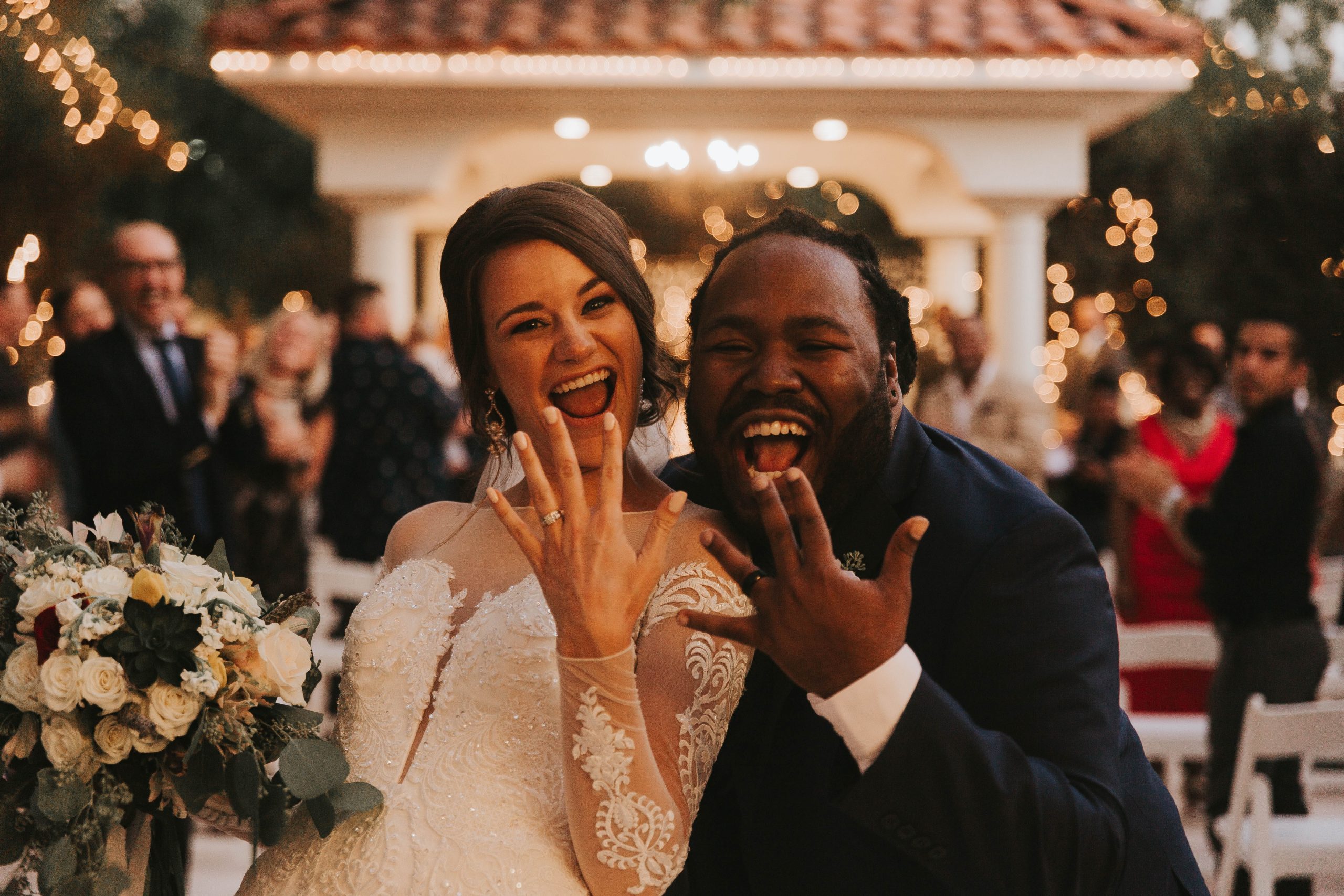21 A Word about Marriage
Elizabeth B. Pearce
We’d like to talk about marriage as a subset of all romantic and love relationships. And we’d like to ask you, the reader, to think about the role of marriage in society.

Here are a set of statements about the role of marriage in the United States.
- Marriage is a social construction; something that people have agreed is a unit of importance that has changed in meaning and function over time and location.
- Marriage is a status symbol; even though people are marrying less it is still important.
- Marriage is an institution that serves a critical function in society.
- People marry for so many reasons and in differing ways that it is difficult to say what it means or why people marry.
Do you agree with some of these statements? Which ones and why? If you wrote your own statement about marriage and society and what would it say?

Each of these statements resonates with one of the perspectives that has been presented in this text. The first one represents the central idea of this text; that many familial operations and structures are social constructions that we have defined as a society and that have changed over time and could change some more. The other three statements each reflect one of the theories described in the Theories and Dispositions Chapter.
Table 5.1. is an excerpt from the table you first saw in Studying Families. Can you match statements 2, 3, and 4 to the theory it represents? Can you create a statement about marriage that represents the theory that you find most compelling?
Theory |
Major Principles |
| Conflict | Opposition, power, and conflict within the family and society are needed for society to develop and change |
| Ecological Systems | Individuals are part of a group of concentric systems that impact their development and growth. |
| Exchange (aka Social Exchange) | Individuals have different strengths, resources and weaknesses and enter into relationships via the evaluation of benefits and costs. |
| Feminism (aka Feminist) | Society is structured in a way that privileges men over women; the theory works to understand and to transform inequalities. |
| Functionalism | Social institutions function together in order to meet individual and group needs. |
| Hierarchy of Needs | Individuals meet one set of needs first in order to be motivated and able to achieve other needs. |
| Life Course | Significant social and historical events shape the trajectories of birth cohorts and the individuals in them. |
| Postmodern (aka Modernity) | Choice and individuality are emphasized in the postmodern era. Humans are able to act in the way they choose with society and within institutions. |
| Symbolic Interaction | This theory focuses on the changing nature of symbols and the ways we interact with one another based on those symbols. Humans see themselves through the eyes of others and this affects the roles they play. |
The author of the text used previously in this class, Andrew Cherlin,[1] is an expert in marriage in the United States. He has written extensively for decades about how marriage functions in our society, and his viewpoint on the role it plays. He describes the three eras of marriage in the United States in this way:
- Marriage as an institution which was the most common among Euro-American settlers from the time of arrival in what became this country until the mid-20th century. In institutionalized marriage roles were clearly defined between the man and the woman in the pursuit of economic and familial stability.
- Companionate marriage emerged as the economy in the United States improved and one spouse (usually the man) worked away from the home and separate spheres emerged. While roles were still well defined, the importance companionship, love, affection and sex were all added to the expectation of economic stability.
- Individualistic marriage evolved with the continued economic growth and the increase in women’s equality and the expansion of gender roles for men, women, and the nonbinary role.

Fig. 5.8. Marriage amongst same sex couples is one example of the movement beyond institutionalized marriage. Parenting and work within a marriage were more likely to be shared. Both partners are expected to be more expressive and communicative. The role of support and encouragement in helping your spouse to become their best selves is added to the growing list of expectations for marriage
To learn more about marriage and cohabitation currently in the United States, review this report from Pew Research Center, which reports on social and demographic trends. You can read about what the current statistics are as well as how individuals view and experience marriage and cohabitation.
Remember that marriage is one way of building a family or kinship group. As you continue to read this text, we encourage you to think critically about what marriage means to your own family and to society and what role it should play.
Licenses and Attributions
Open Content, Shared Previously
Figure 5.6. “Love and Marriage 298/366” by Skley. License: CC BY-ND 2.0.
Figure 5.7. Photo by Analise Benevides. License: Unsplash license.
Figure 5.8. “gay marriage” by Mellicious. License: CC BY-ND 2.0.
- Cherlin, A. J. (2004). The deinstitutionalization of American marriage. Journal of Marriage and Family, 66(4), 848–861. https://doi.org/10.1111/j.0022-2445.2004.00058.x ↵
Marriage that is socially and legally recognized by clearly defined gender roles and patterns of behavior.
A marriage defined by economic stability that also values companionship, love, affection, and sex.
A type of marriage that is defined by self-development, self-actualization, emotional gratification, flexible roles and open communication.

